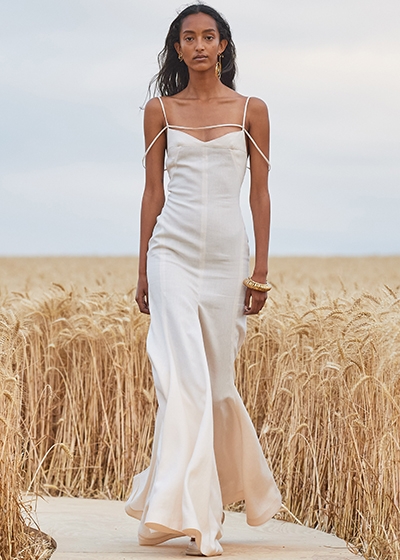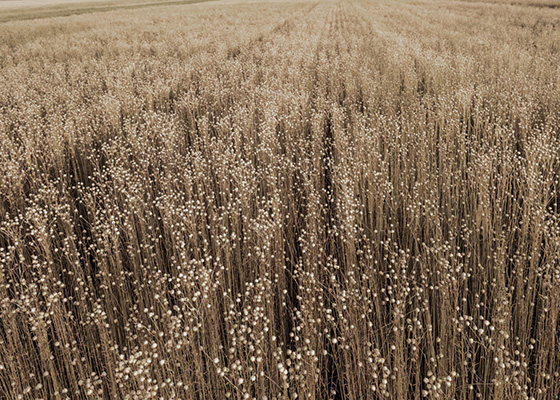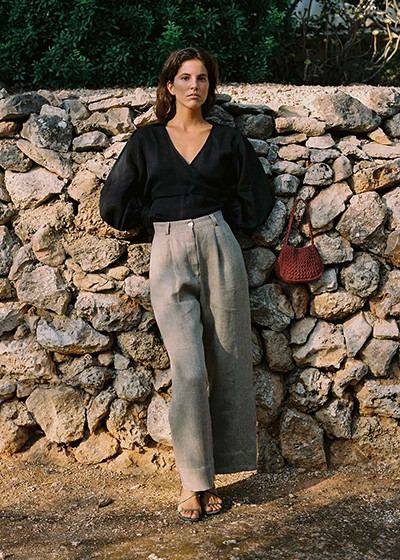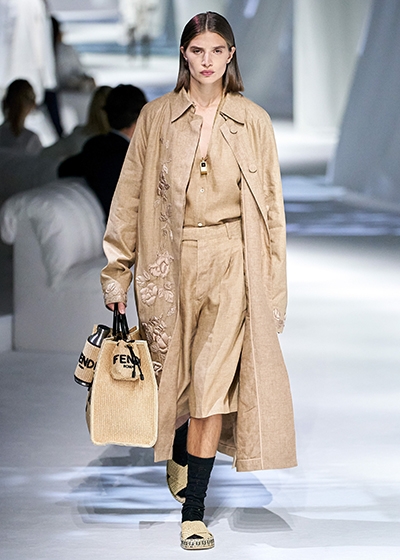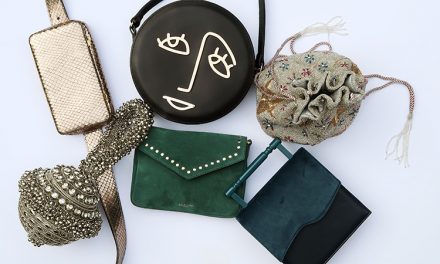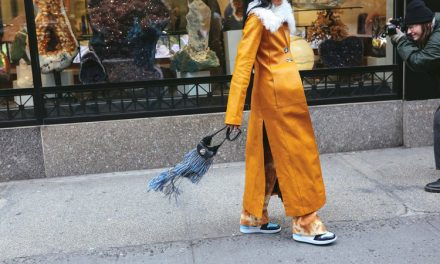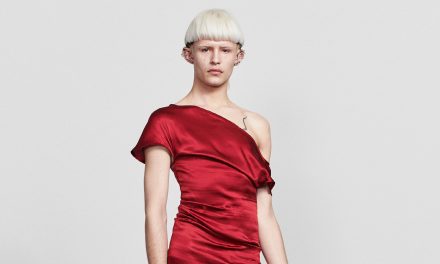A Guide To Linen – Summer’s Most Popular Fabric
When it comes to sustainable natural fibres, you have to wake up pretty early to beat linen. We investigate why the fabric is so eco friendly and why it’s proving to be this Summer’s most popular fabric
Flax, the plant that produces linen, has been around since, well the dawn of time. Not only is linen emerging as a luxurious, not to mention eco friendly fabric, but it’s uses are also very practical. So how can such an ancient fabric, have such modern applications? And can it be an attractive option for our wardrobes? We find out why linen was a winner on the Spring Summer catwalks and why we think it’s worth investing in all year round.
Once written off as an unattractive fabric, favoured by hippies and earthy types, linen has made an exciting come back into our wardrobes of late. Shedding it’s once scratchy connotations, linen has begun appearing on the international catwalks. An increase of 102% in linen looks were recorded during the Spring 2021 shows by fashion search engine Tagwalk. Working with the CELC (The European Confederation of Flax & Hemp), Tagwalk noted that “the Spring/Summer 2020 season clearly marked a breakthrough for linen in the luxury collections: linen accounted for 11% of all collections.” An upward trajectory has been forecasted for the fabric, seen used across a cross section of labels, both sustainable, and not.
“27% of the 30 eco-friendly brands used linen in their Spring/Summer 2021 collections, including Maison Margiela, Stella McCartney, Vivienne Westwood, Phoebe English, etc,” Tagwalk found. Alongside these sustainable luxury houses, linen also appeared on the cornfield lined catwalk of Jacquemus’ show. As well as in Milan at Fendi, who used linen for the first time. It’s an exciting thing to see luxury fashion labels adopting such an environmentally sustainable fabric, helping to elevate it’s status as a luxury fabric. As the late Christian Dior noted, “linen is to the couturier what marble is to the sculptor, a noble material.” However, we feel it’s important to note what while brands like Fendi may use an eco aware option of fabric, they continue to use real fur elsewhere in their business. While purchasing items made using responsible fabrics, care should also be taken regarding the human element of brands, even ones as ‘luxurious’ as Fendi and Jacquemus.
Why is Linen So Eco Friendly
When looking at how ‘earth friendly’ a fabric is, we should look at proximity to manufacturing as an important factor in linen’s credentials. 85% of flax around the world is grown in Europe, mostly in France. For the aforementioned fashion houses, it means they can easily minimse the carbon footprint they create by transporting materials around their supply chains within Europe. This also helps with traceability. Brands can easily trace the origins of the fabrics they use and the quality of the supply chain. In a world of ever complicated supply chains, this element of sustainability cannot be overlooked.
Another factor is in the growing and harvesting of flax to make linen. Compared to it’s notoriously thirsty friend cotton, flax is grown without irrigation. Instead, it thrives using just natural rainfall. Minimal intervention is required throughout the life of the crop, and it’s a source of support for ecosystems and biodiversity. Unlike cotton which often decimates the land on which it’s grown, linen helps prepare the land for future crops. Retting (separating the plant fibre from the stalks) happens naturally thanks to alternating exposure from the sun and rainfall. This hands off approach makes flax an incredibly eco friendly fabric, as well as being biodegradable at the end of its life.
Why Has Linen Become More Popular?
As fashion looks to more ethical and eco friendly production, fabrics like linen offer the perfect attributes. Natural, especially organic farbics are preferable to those created using plastics because they don’t shed microplastics when washed. The local availability of linen as well as a low carbon footprint make it a great alternative to cotton. Even organic cotton. And when cut into elegant trouser suits, or draped as a dress, it takes on an unexpected luxury. Lea Wieser, Co-Founder of Arkitaip couldn’t agree more. Speaking to Founder Lucy Kebbell during an episode of Style With Substance, Lea told us that when searching for an eco friendly, as well as skin friendly fabric to use in their range, linen was the clear winner.
Linen works well at regulating body temperature, making it perfect to wear all year round. Although it’s mainly found in Spring and Resortwear collections, it will actually keep you warm in winter, as well as cool in summer. Linen is hypoallergenic, and because flax is grown without the use of pesticides, perfect for those with sensitive skin. Arkitaip’s entire range, from jackets, jumpsuits and dresses, to blouses, is made from varied weights of European sourced linen. Its easy to see why Lea is so excited by the fabric and it’s incredible potential within fashion and the lifestyle sector. Tagwalk anticipate an increase in linen use on the catwalks of 171% for Autumn Winter 2021/22. It’s already the fourth most popular fabric used by luxury houses, after wool, denim and leather.
Linen On The Highstreet
Linen isn’t just in favour in the luxury sector. CELC’s new ‘I Love Linen’ campaign has encouraged high street retailers in the UK to adopt this sustainable fabric too. Brands like Toast, Three Graces London, Whistles, Hobbs and Phase Eight have all used linen in their collections. Stephanie Teigh, Head of Design at Hobbs says, “linen product is instantly recognisable, and reads as premium and expensive, perfect for Hobbs luxury style.”
Making linen an affordable and inclusive fabric is essential if it is to be seen as truly sustainable and ethical material in our wardrobe. It’s long lasting nature, not to mention it’s easy care (it needs minimal washing) make it a perfect investment. As for the inevitable creasing, Lea tells us that this should be embraced! Linen will crinkle easily, however there is beauty in it’s imperfect nature.
Did This Put A Smile On Your Face? Why Not Subscribe?
If you enjoyed this then theres plenty more on our email newsletters that you'll love. Whether you're a sustainable newbie or an eco conscious pro, our bi monthly emails will inspire you to live sustainably and ethically.

